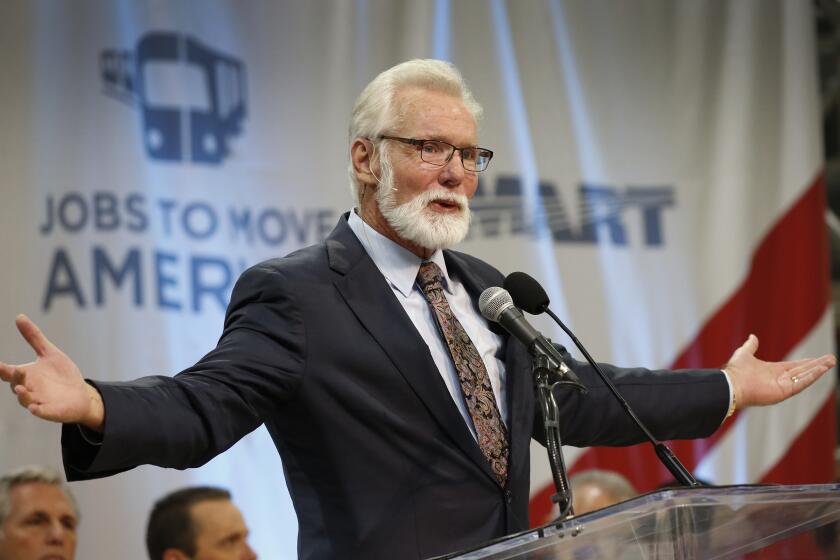Students would benefit if L.A. Unified kept curriculum, Pearson exec says
- Share via
A top official from Pearson said Thursday that students would benefit if the Los Angeles Unified School District continued to use its curriculum on iPads and other computers.
The school district this week demanded a refund for the curriculum, which was part of a now-abandoned $1.3-billion effort to provide an iPad to every student, teacher and administrator in the nation’s second-largest school system.
Pearson, as a subcontractor to Apple, provided digital math and English course materials.
“First of all, I think it’s a brilliant product,” said Sir Michael Barber, the chief education advisor at Pearson. Barber called the Pearson system innovative and explicitly tied to new learning standards adopted by California and 42 other states.
“It’s got that emphasis on depth of learning as well as coverage,” he said. “You have to learn the ideas and then apply the ideas.”
L.A. Unified bought 43,261 iPads with the Pearson curriculum. The curriculum added about $200, for a three-year license, to the $768 price for each device. (The district purchased another 77,175 iPads under the contract without the Pearson curriculum to be used initially for state standardized tests.)
The iPad effort in L.A. Unified faltered from the start. Currently, the FBI is investigating the bidding process and the SEC has launched an informal inquiry into whether the district complied with legal guidelines in the use of bond funds for the devices and curriculum.
Pearson offered only a partial curriculum during the first year of the license, which was permitted under the agreement.
The product has not caught on in L.A. Unified. Only two schools of 69 with the devices use Pearson regularly, according to an internal March report from project director Bernadette Lucas.
The report cited a litany of complaints, including content that could not be fully adapted for students with limited English skills, a large group in L.A. Unified. The district also claims the curriculum lacks important features such as online tests and data on how and when students are using it. Another problem has been getting access to the online curriculum quickly and consistently.
“Any given class typically experiences one problem or more daily,” Lucas wrote in the report. “Teachers report that the students enjoy the interactive content -- when it’s available. When it’s not, teachers and students try to roll with the interruptions to teaching and learning as best they can.”
The district characterized Apple and Pearson as insufficiently responsive to these problems.
Barber acknowledged that there have been difficulties and said that Pearson, Apple and the district shared responsibility as partners in the effort. But he added that Pearson is willing to work through such issues, and that students would benefit if the district stayed the course.
With such sweeping change, “you’re going to have glitches. You’re going to run into challenges,” he said. In the long run, he predicted, Pearson’s product could help “transform teaching and learning.”
“Once you get used to using these materials,” he said, students and teachers will find them “very engaging, very empowering.”
He added that the company is committed to making its materials prove themselves.
“All of our products should be judged by their impact on learner outcomes, not just their financial outcomes,” he said.
School board member Steve Zimmer, for one, was not ready to reconsider the district’s refund demand.
“Very simply, it’s not good. It’s not easy to use,” he said of the Pearson product in a Thursday interview on KCRW. “Give the taxpayers their money back.”
Twitter: @howardblume
More to Read
Sign up for Essential California
The most important California stories and recommendations in your inbox every morning.
You may occasionally receive promotional content from the Los Angeles Times.











